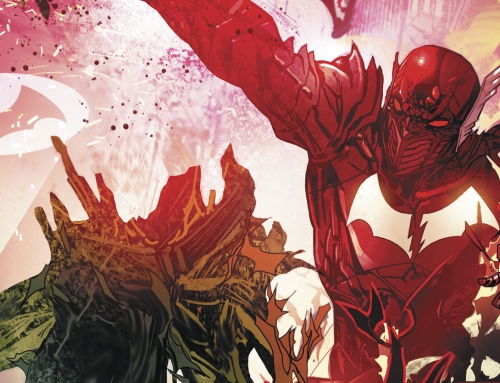Joe Vonier digs deeper into the role of superheroes in American history.
The year was 1938, just nine short years after the Wall Street market crash, and America was trying everything it could to just hold on. People were living in quickly constructed villages or “shantytowns”. The future did not seem bright, hope was a fool child’s dream and morale was non-existent. Enter Superman; Created by two seventeen-year-old boys from Cleveland, Jerry Siegel and Joseph Shuster. While we like to think he just appeared into existence, his creation was not as mythic. Siegel and Shuster worked on his creation for seven years before his first appearance. Superman went through many forms, his first was just being an average everyday guy, fighting crime on a street level. They boys attempted to sell the Superman story to an array of different publishers, and after seven long years, the wait was over. Making his debut on the cover of Action Comics #1, he was not the fully fledged American Avatar we know today. At that time he could only leap one-eighth of a mile, run faster than an express train and lift extremely heavy weights. Flight was not yet attainable for him, the best he could do was to leap in very large bounds. Everything that Siegel and Shuster created, even down to the cover could not have been more perfect. Like Jesus on a stain glass window there he stands, performing incredible feats that would otherwise be impossible if attempted by anyone else on this planet. And like Jesus, Kal-El from Krypton came down to show us how to live without destroying our fellow man.

The story of Superman’s origin is very reminiscent of Siegel and Shuster’s own personal journeys. Both boys came from Jewish immigrant families from the Russian Empire. And like Kal-El of Krypton, they could never again return to their homeland. And like Siegel and Shuster, Superman could only bring with him his culture, values, and beliefs. Crash landing from an exploding Krypton, Superman is found by Thomas and Martha Kent, they immediately adopt him and raise him as their own. Superman’s adoptive parents represented how Siegel and Shuster viewed Mid-West America: honest, hardworking, and moral. They cemented those same values into their adoptive son, making him a force for good. But Siegel and Shuster were not yet finished expounding on their lives in America. We were then introduced to Clark Kent.
You would be forgiven if you confused Clark with the young Jerry Siegel, they both were timid, mild mannered, and quite unsure of themselves. And in that, we get a glimpse into the soul of Superman. Like a magician lifting the veil over his now disappeared assistant, Siegel lifted the veil on Superman exposing his one true weakness before the creation Kryptonite, his heart. Siegel had created a character that all of us could identify with. Who among us hasn’t been clumsy or awkward? With this revelation, readers flocked to Superman and began to not see him as a hero, but rather a mirror.

The finishing touch of this first issue of Superman came in the form of Daily Star, Later Daily Planet, reporter Lois Lane. Her first appearance would lay her foundations for decades to come. She was painted a career minded, aggressive, emasculating, woman with something to prove in a world run by men. Her character echoed the current women’s work force Siegel and Shuster would have experienced in the Comics Industry, underpaid and looked down upon. But like most women of the time, Lois Lane, pressed forward, becoming a symbol for Feminism or Civil Rights in the 1970’s. She has created a niche in the DC comics’ pantheon as one of the oldest and richest characters in the stable.

In the same year as its debut, Action Comics had purchased the right to Superman from Siegel and Shuster for a mere $130. Let’s think about that. That sum in today’s standards would have been about $2200. Now think about the pop culture deity and money magnet the infamous S symbol alone can bring. Some would have you believe that an unstoppable force of Capitalism stole the character and the money right out from under these innocent boys. Others would say that they had no more interest in continuing Superman and hoped to create better heroes. Unfortunately, that did not happen. In 1975 the two, and few artist and writers of DC Comics, spearheaded a campaign to have them repaid for all the success of Superman. That year they were awarded $20,000, later increased to $30,000 a year for the rest of their lives and an exclusive by-line on everything Superman related. By the release of the Superman movie in 1978, Siegel was working as mail clerk and Shuster was living his remaining days in a California nursing home, partially blind.
The success of Superman did not go unnoticed, many tried to copy the formula, and to their realization, the only thing they accomplished was getting a lawsuit. DC comics found themselves in a conundrum: how to create a successful Superman clone without copying him. Looking from the scope of today’s world the answer was in front of them the entire time. Reverse the formula. Not to reverse engineer, but make a complete analog to everything Superman was.
Enter Batman.
Latest posts by Joe Vonier (see all)
- Superhero History 101: The Kryptonian Jesus - June 23, 2016
- Superhero History 101: The American Mythology - May 2, 2016






Leave A Comment